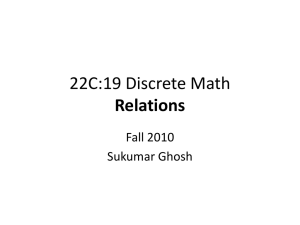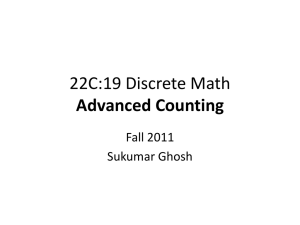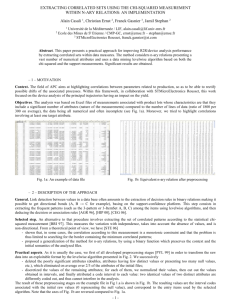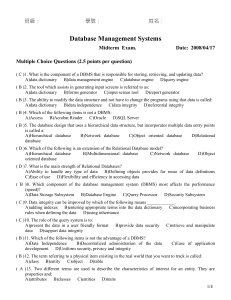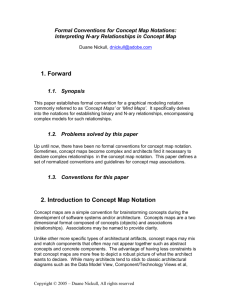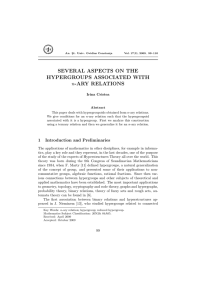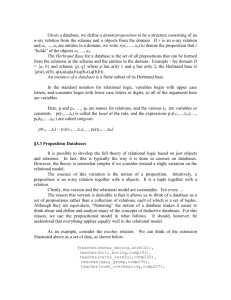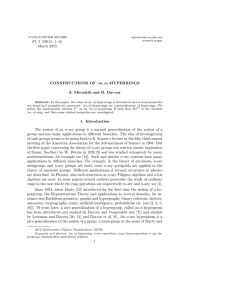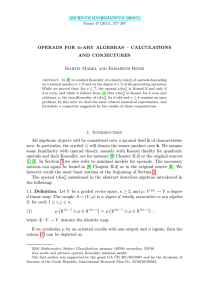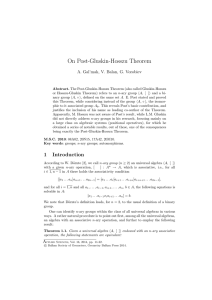n-Ary Relations An n-ary relation on A , A
advertisement
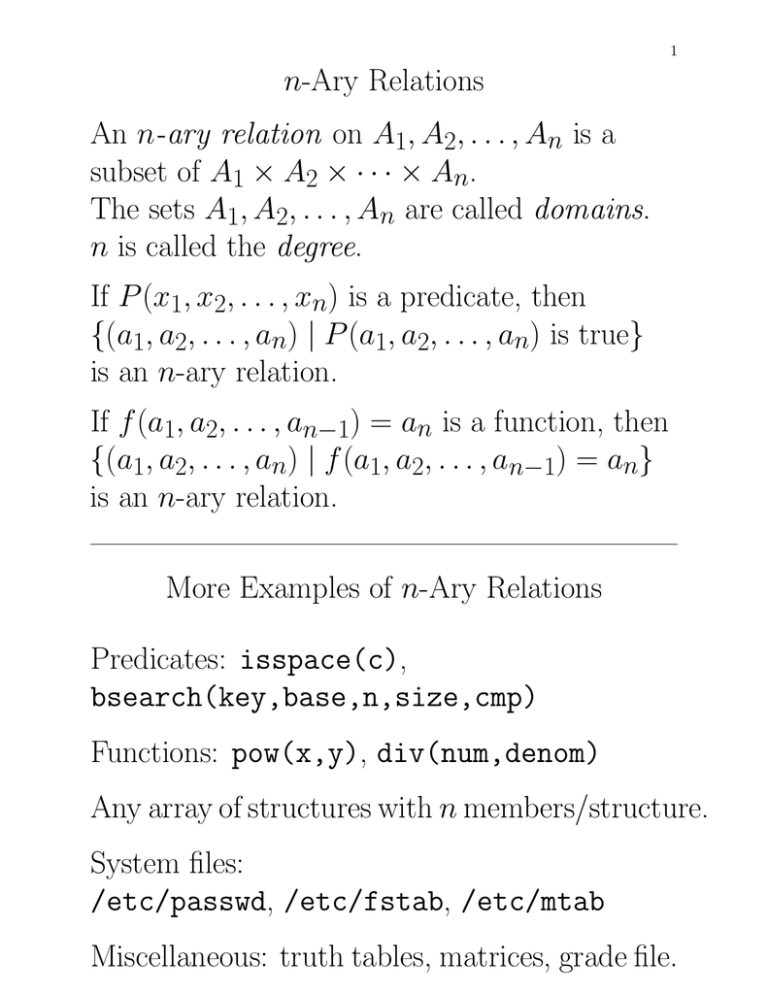
1
n-Ary Relations
An n-ary relation on A1, A2, . . . , An is a
subset of A1 × A2 × · · · × An.
The sets A1, A2, . . . , An are called domains.
n is called the degree.
If P (x1, x2, . . . , xn) is a predicate, then
{(a1, a2, . . . , an) | P (a1, a2, . . . , an) is true}
is an n-ary relation.
If f (a1, a2, . . . , an−1) = an is a function, then
{(a1, a2, . . . , an) | f (a1, a2, . . . , an−1) = an}
is an n-ary relation.
More Examples of n-Ary Relations
Predicates: isspace(c),
bsearch(key,base,n,size,cmp)
Functions: pow(x,y), div(num,denom)
Any array of structures with n members/structure.
System files:
/etc/passwd, /etc/fstab, /etc/mtab
Miscellaneous: truth tables, matrices, grade file.
2
Relational Databases
Relational databases consist of n-ary relations. A table
corresponds to an n-ary relation. A record corresponds
to an element. A field corresponds to a domain.
There are three important operations.
1. Select. Find the records in a table that satisfies some
condition, creating a table with fewer records.
2. Project. Choose a subset of the fields, creating a table
with fewer fields.
3. Join. Create a new table from two other tables. If a
record from table 1 and a record from table 2 have
identical value(s) for certain field(s), then the two
records are combined to create a new record.
H1
110
86
00
115
65
110
85
100
88
50
H2
68
95
85
81
56
95
100
56
80
90
H3
115
120
120
95
65
120
80
65
80
90
M1
87
96
91
77
81
97
90
81
98
88
H4
80
100
100
95
85
100
70
88
100
60
H5
90
98
00
83
73
89
93
00
75
65
H6
81
70
78
91
78
94
95
00
60
80
M2
98
95
95
95
91
90
88
88
81
81
